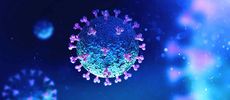EPA Recreational Water Testing Workshop: Updates and Considerations


This spring, the Environmental Protection Agency (EPA) held the National Recreational Water Quality Workshop. The conference brings together recreational water managers, researchers, stakeholders, and public health officials to share information and ideas every two to three years. The EPA uses these gatherings to address emerging concerns and ways to improve coastal and inland water management.
Topics of interest during the recent workshop included the development of coliphage tests to assess water quality, climate change, and the spread of Vibrio and toxic algal blooms in coastal and inland waters. In addition, several sessions focused on antimicrobial resistant (AMR) pathogens in water and water quality modeling. Here's a closer look.
Development of Coliphage Testing
Regulatory guidelines for recreational waters usually require quality assessment through bacterial indicators, such as E. coli and enterococci. This approach provides no information about viral pathogens, however. That puts populations at risk for waterborne viral outbreaks. In response, the EPA is investigating the use of coliphage as a viral indicator.
Coliphages, which better mimic viruses, may be more helpful to detect intestinal infections like norovirus. According to ScienceDirect, coliphages more easily resist disinfection and spread greater distances from pollution sources, decreasing the possibility of false-negative results of contamination. Also, enterococcus may regrow in the environment, leading to the possibility of overestimating contamination extent and false-positive results.
Sessions explored coliphage use for water quality testing, development of test methods, and characterization of relationships between coliphage and other fecal indicators.
Climate Change and Vibrio Spread
The impact of climate change on beaches themselves — such as eroding shorelines and disappearing wetlands — may overshadow water quality concerns. Still, water quality could decline. Warming temperatures may lead to increased rainfall and runoff from urban and agricultural environments, with the potential to contaminate recreational water. Another concern is that Vibrio species, which are warm-water bacteria, may start to move northward due to increased seawater temperatures.
Research in North Carolina found that Vibrio responded to changes in salinity but not temperature. Work in Southern California explored potential health risks and established methods for detecting and quantifying Vibrio species of interest and associated communities to assess water quality concerns.
Harmful Algal Blooms
In coastal and inland waters, harmful algal blooms (HAB) are an emerging public health concern. The toxins can sicken both humans and animals, but gaps in knowledge and research limit general identification and understanding of the resulting illnesses. The Centers for Disease Control and Prevention launched One Health Harmful Algal Bloom System in 2016 to help address these gaps and track cases of illness associated with HAB exposure.
Managers concerned about HABs need answers to three questions: 1) Does the water have algae? 2) If so, are some of the algae species harmful? 3) If yes, what is the concentration of toxins being released into the water?
One research project evaluated the use of molecular-based approaches to identify the species that produce toxins and factors that promote toxic blooms. Preliminary results show a correlation between land use and cover and nutrients and chemical parameters. Molecular data can help predict bloom toxicity one to two weeks before tests detect toxins in the water. Early notice could help protect recreationists from poor water quality ahead of testing.
Many recreational water managers are developing algal monitoring and toxin testing programs. Rapid field tests for toxicity and appropriate ways to remediate HABs would simplify managers' jobs.
Antimicrobial Resistant Bacteria
Several sessions covered another recent concern among water quality managers — AMR bacteria. AMR could make its way from sewer systems into oceans, rivers, and streams, and eventually to crowded beaches. Scientists are studying what happens after discharge of AMR bacteria and resistance genes into the environment and the effectiveness of treatment.
Research in California discovered large quantities of these bacteria and genes in the effluent of the 10 wastewater treatment plants studied. High levels of disinfection proved more effective at reducing AMR bacteria and gene concentrations than minimal treatment. Still, the potential human and environmental health consequences of increased resistance are not yet known.
Modeling
Water quality modeling is a promising area of focus for researchers and practitioners. Managers currently make closure decisions for beaches based on tests of water sampled the day before. A better method may be to predict unacceptable water quality based on variables like recent rain events and sewage spills. As the science of modeling evolves, these types of determinations could provide better information for decision-making.
Your Role
The work of public and private water labs is critical to address recreational water quality concerns. By staying aware of emerging issues — and working with managers, researchers, and government officials to solve them — you contribute to the health of humans, animals, and the environment, showing your lab's commitment to the community.






